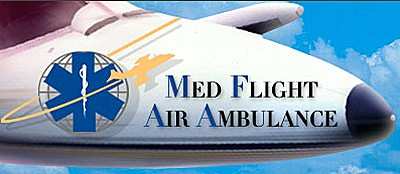Failed To Heed Terrain Procedures And Warnings
 The National
Transportation Safety Board ruled Tuesday that a combination of
flight crew and air traffic control deficiencies led to
the 2004 crash of an air ambulance near San Diego,
CA.
The National
Transportation Safety Board ruled Tuesday that a combination of
flight crew and air traffic control deficiencies led to
the 2004 crash of an air ambulance near San Diego,
CA.
"The Board has seen too often in its investigations where the
flight crew and/or controllers are not performing their duties as
they should," said NTSB Acting Chairman Mark Rosenker. "We
can not emphasize enough the importance of following the
appropriate procedures to help ensure safety."
Below is the NTSB summary of the accident.
****
On October 24, 2004 a Learjet 35A operated by Med Flight Air
Ambulance (MFAA), crashed into mountainous terrain shortly after
takeoff from Brown Field Municipal Airport (SDM), near San Diego,
CA. The captain, the copilot, and three medical crewmembers
were killed. The airplane was destroyed.
The Board determined that the probable cause of the accident was
the flight crew's failure to maintain terrain clearance during a
visual flight rules (VFR) departure, which resulted in controlled
flight into terrain, and the air traffic controller's issuance of a
clearance that transferred the responsibility for terrain clearance
from the flight crew to the controller. Additionally, the
controller's failure to provide terrain clearance instructions to
the flight crew, and failure to advise the flight crew of the
minimum safe altitude warning (MSAW) alerts was also causal to the
accident.

The airplane departed under VFR at night and was being handled
by an air traffic controller when it crashed into the mountain. The
Board's investigation revealed that according to the Federal
Aviation Administration's (FAA) Aeronautical Information Manual
(AIM), the recommended procedure for departing under VFR at night
in areas of mountainous terrain is to adhere to the airport's
takeoff minimums and departure procedures for instrument flight
rules (IFR).
The NTSB states the accident captain and copilot did not follow
the recommended departure procedure and instead flew the airplane
straight out on a heading toward the mountains and leveled off at
an altitude of 2,300 feet, presumably to maintain VFR below the
cloud ceiling.
 The controller
identified the airplane on the radar screen, provided the flight
crew with a heading, and instructed the crew to maintain VFR and
expect an IFR clearance above 5,000 feet. The captain acknowledged
the heading instructions; however, the heading issued by the
controller resulted in a flight track that allowed the airplane to
continue directly toward mountains. This was also the time, the
Board noted, that the controllers computer system generated aural
and visual MSAW alerts on the display, yet the controller took no
action to warn the flight crew about the MSAW alerts.
The controller
identified the airplane on the radar screen, provided the flight
crew with a heading, and instructed the crew to maintain VFR and
expect an IFR clearance above 5,000 feet. The captain acknowledged
the heading instructions; however, the heading issued by the
controller resulted in a flight track that allowed the airplane to
continue directly toward mountains. This was also the time, the
Board noted, that the controllers computer system generated aural
and visual MSAW alerts on the display, yet the controller took no
action to warn the flight crew about the MSAW alerts.
The Board pointed out that although the flight crew is
responsible for maintaining terrain clearance while operating under
VFR, FAA rules state that, when an aircraft is operating under VFR
below minimum IFR altitudes and the flight crew requests an IFR
clearance, the controller should ask the crew if they would be able
to maintain terrain and obstruction clearance during the climb to
the minimum IFR altitude. It was reported to the Board that the
controller was unaware of this responsibility. The controller had
the knowledge and opportunity to alert the flight crew to an unsafe
condition, but failed to take appropriate action to do so, the
Board concluded.
Contributing to the accident was the pilots' fatigue, which
likely contributed to their degraded decisionmaking, the Board
stated. At the time of the accident, the captain had been awake
about 17.5 hours, and the co-pilot had been awake about 16 hours,
and both pilots had accumulated about 11 hours duty time. The Board
noted that although the duty and rest times of both flight
crewmembers were in compliance with Part 135 rules, the accident
flight departed about 3 hours past both crewmembers' normal
bedtimes at the end of a long duty day.
 Bolen Gives Congress a Rare Thumbs-Up
Bolen Gives Congress a Rare Thumbs-Up The SportPlane Resource Guide RETURNS!!!!
The SportPlane Resource Guide RETURNS!!!! Buying Sprees Continue: Textron eAviation Takes On Amazilia Aerospace
Buying Sprees Continue: Textron eAviation Takes On Amazilia Aerospace Hawker 4000 Bizjets Gain Nav System, Data Link STC
Hawker 4000 Bizjets Gain Nav System, Data Link STC Echodyne Gets BVLOS Waiver for AiRanger Aircraft
Echodyne Gets BVLOS Waiver for AiRanger Aircraft





